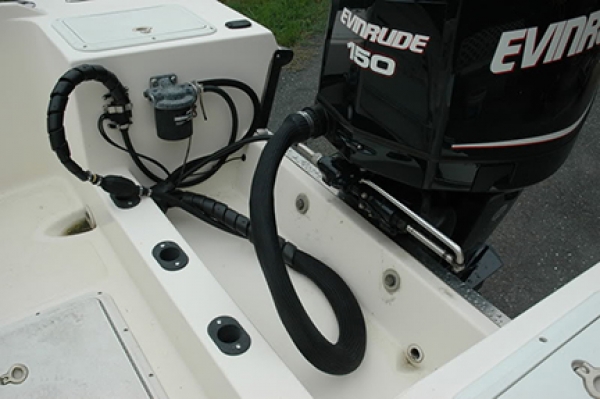The first thing you are going to have to do is pick up a fuel / water separator kit at your local marina or outboard parts store. If you are unsure which one you need for your boat, ask the parts department at the marina for some help. Once you are ready to install the filter make sure you open all of the hatches to ensure proper ventilation. You are going to want to mount the unit somewhere between the tank and where your primer bulb sits if you have an outboard. If you do not have an outboard it will have to be installed somewhere between the tank and the engine. Once you have a location picked out to mount the unit that is easily accessible for future filter changes, cut the line at that spot.
You are going to want to install the unit above where any water may collect at the bottom of the boat. Also make sure that the hoses do not end up getting kinked or having any sharp turns preventing the flow of fuel. Drill your pilot holes, fill them with sealant, and them secure the fuel water separator to the boat with stainless self tapping screws. After that apply sealant to the fuel fittings and attach them on the unit.
Once you have the unit mounted in a convenient spot, the next step is to attach the tank end section of hose to the "IN" port of the separator. Next whether you have the primer bulb hose section (on an outboard) or the engine end hose section (on an I/O) left, connect that section to the "OUT" port of the separator. Make sure both hoses are tightly clamped to the unit.
The installation is done at this point but the last thing you are going to want to do is start up your motor. You are going to want to check the line for leaks at fast idle and then at high RPM. Don't go too far from the launch though, that way if anything happens your close to the launch and you have a better chance to get back to the dock.


